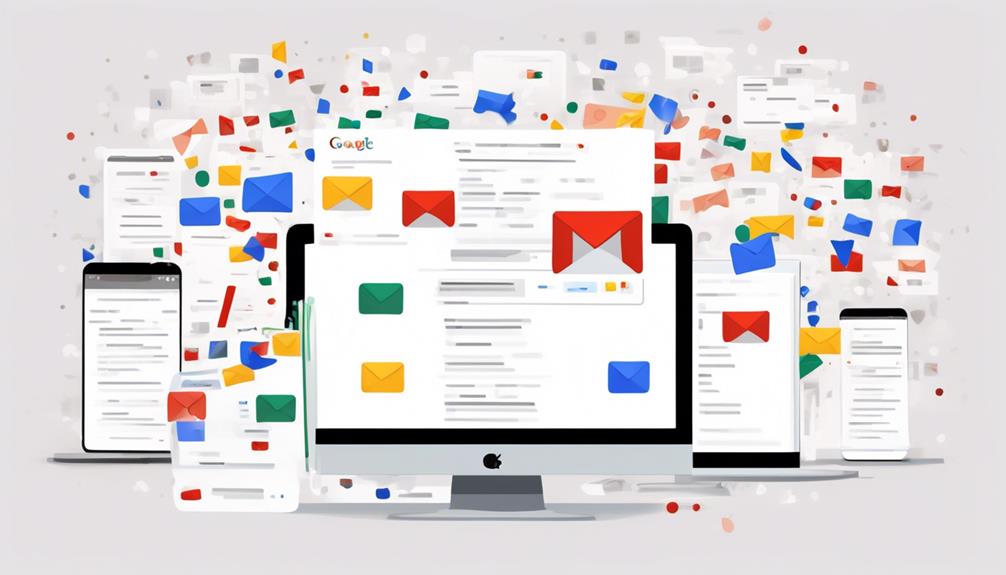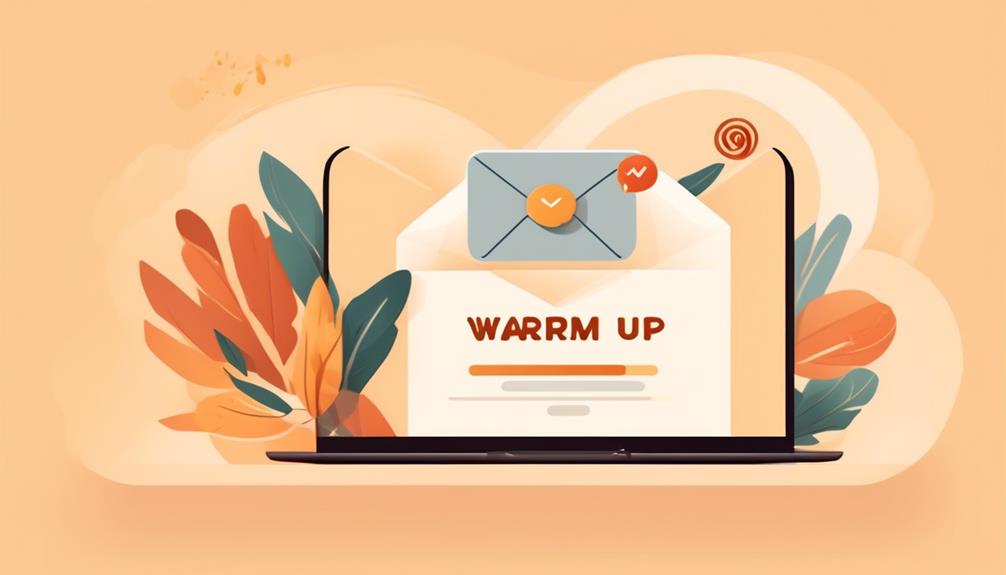Is there a way to increase the chances of your emails reaching the inbox, given the widespread belief that 80% of marketing emails end up in the spam folder?
Email list warm-up is a crucial strategy for anyone looking to improve their email deliverability, yet many are unsure of where to begin.
As we explore the intricacies of email list warm-up, we'll uncover the key steps, best practices, and benefits that can help you establish trust with internet service providers and ultimately enhance your email marketing efforts.
Key Takeaways
- Email warm-up is crucial for establishing a positive reputation with email service providers and improving deliverability.
- Gradually increasing email sending volume and monitoring metrics demonstrates legitimacy and helps avoid being flagged as spam.
- Building genuine connections and focusing on engagement during the warm-up phase is essential for better inbox placement.
- Utilizing email warm-up tools can automate the process and regulate sending volumes, improving overall sender reputation.
Importance of Email Warm-Up
Establishing a positive reputation with email service providers and avoiding spam filters is crucial for successful cold email outreach, making the importance of email warm-up undeniable. When we neglect warm-up, our emails risk being flagged as spam, damaging our sender reputation and hindering our outreach efforts.
By gradually increasing our email sending volume and closely monitoring key metrics, we can demonstrate to email service providers that we're a legitimate sender with valuable content to share. This process helps our domain and email accounts to be recognized as trustworthy sources, enhancing our chances of reaching recipients' inboxes.
Effective warm-up not only improves deliverability and open rates but also lays the foundation for better engagement with our audience. It sets the stage for successful future email campaigns, ultimately contributing to our sales goals. Therefore, prioritizing the warm-up process is essential for any organization or individual looking to leverage email as a powerful communication and marketing tool.
Steps for Manual Email Warm-Up
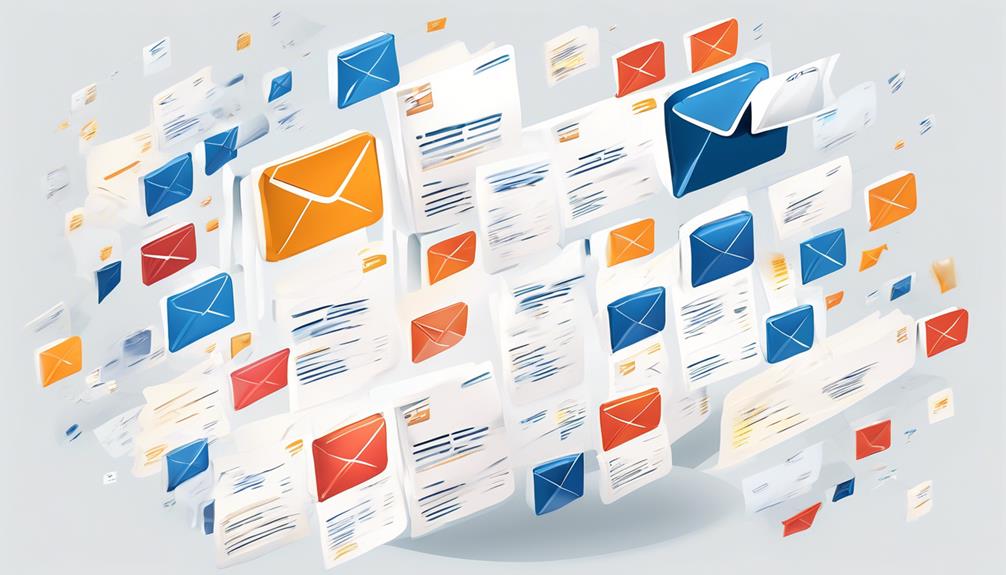
Email warm-up is essential for successful outreach, and to achieve this, one must follow specific steps to gradually establish credibility and engagement with email service providers and recipients. When warming up your email, it's crucial to start slowly and focus on building genuine connections rather than sending cold emails. Here are the steps for manual email warm-up:
| Steps | Description | Importance |
|---|---|---|
| Start with personal contacts | Begin by sending a few emails per day to friends, colleagues, and existing clients. | Establish initial engagement |
| Avoid sales-related emails | During the warm-up phase, refrain from sending sales-related emails. | Focus on genuine connections |
| Diversify email addresses | Collect a list of addresses from different email hosts to demonstrate diverse engagement. | Gain credibility with various providers |
Factors Affecting Email Warm-Up
Understanding the key factors that influence email warm-up is crucial for successful email deliverability and reputation building. Factors affecting email warm-up include:
- Sending Volume: Gradually increasing the volume of emails sent from a new account is crucial. Sending a large number of emails from a cold account can trigger spam filters and negatively impact deliverability.
- Content Quality: The content of the emails plays a significant role in warm-up. Relevant, engaging, and non-spammy content is more likely to make it to the recipient's inbox.
- Engagement: Interacting with the email service, such as opening emails, replying, and clicking on links, helps build a positive reputation. Engaged recipients are less likely to mark emails as spam, which enhances the sender's reputation.
Considering these factors when warming up an email account can make a significant difference in the success of the warm-up process. By carefully managing the sending volume, creating high-quality content, and actively engaging with the email service, the likelihood of emails being marked as spam decreases, and the chances of successfully warming up the email account increase.
Key Points During Warm-Up Phase
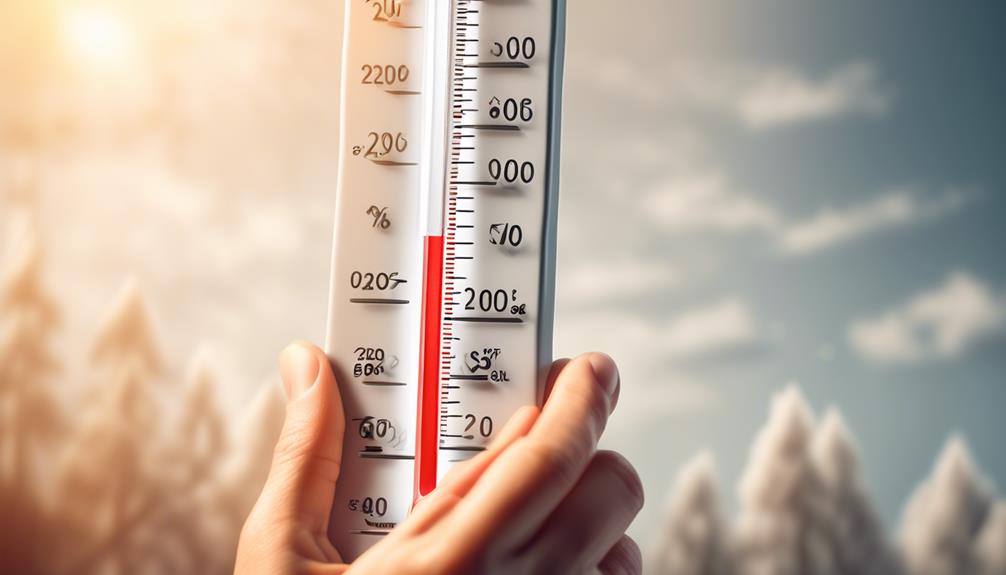
During the warm-up phase, it's crucial to focus on key points that contribute to successful email deliverability and reputation building. When warming up email accounts, several key points should be considered to ensure a good reputation with email service providers and optimal sending volume.
| Key Points | Description |
|---|---|
| Start Slow | Begin by sending a small volume of emails and gradually increase the sending volume over a few weeks. This gradual increase helps build a positive sending reputation. |
| Engage Authentically | Focus on genuine engagement with recipients. Encourage recipients to interact with the emails by including valuable content and encouraging responses. |
| Use Email Warm-Up Tools | Consider using email warm-up tools to automate the warm-up process. These tools can help regulate sending volumes and simulate natural email interactions. |
| Monitor Metrics | Track key metrics such as open rates, click-through rates, and bounce rates. Monitoring these metrics provides insights into the effectiveness of the warm-up process. |
| Patience is Key | Allow sufficient time for the warm-up process. Waiting at least 12 weeks before fully utilizing the email account is recommended to ensure a successful warm-up. |
Email Warm-Up Best Practices
When it comes to email warm-up, timing is crucial. We need to ensure that our sending frequency gradually increases, keeping our content relevant and engaging.
Our goal is to build trust with ISPs and engage with our audience effectively.
Warm-up Timing
To optimize the success of email warm-up, gradually increasing the volume of emails sent from a new account over a period of weeks is a recommended best practice. When warming up your new email address, the start time is crucial for email deliverability.
Here are the best practices for warm-up timing:
- Using a conservative approach: Start with a small number of emails and gradually increase the volume over several weeks to build a positive reputation with email service providers (ESPs).
- Determining the right time: Wait at least 12 weeks before fully utilizing the email account for cold emailing to ensure a good start time for the warm-up process.
- Adapting to engagement levels: If there's low engagement with the email account, consider extending the warm-up period to establish credibility and increase inbox placement.
Content Relevancy
Gradually increasing the number of emails sent from a new email account is crucial in establishing credibility and improving deliverability. Content relevancy plays a significant role in the email warm-up process. It's essential to make sure that the content of the emails aligns with the interests and preferences of the recipients. Sending cold emails or irrelevant content can negatively impact the warm start of an email account.
Personalized emails that provide value to the recipients can contribute to a successful warm-up. Additionally, focusing on engaging and valuable content helps in meeting the email sending quota while fostering genuine interactions.
Moreover, ensuring that SPF and DKIM records are properly set up can enhance the credibility of the emails being sent and received, further aiding in the warm-up process.
Engagement Techniques
Building on the importance of content relevancy in the email warm-up process, effective engagement techniques play a crucial role in establishing credibility and improving deliverability.
Here are three essential engagement techniques for email list warm-up:
- Gradual Increase in Email Volume: Start by sending a small number of emails from your new account, gradually increasing the volume over time. This gradual warm start mimics natural email behavior and helps avoid triggering spam filters.
- Manual Engagement: Actively engage with friends and colleagues by sending personal emails and subscribing to newsletters using your new account. This manual interaction signals genuine use of the account before sending cold emails.
- Consistent Sending Schedule: Establish a consistent sending schedule to simulate regular user behavior. This consistent approach helps in building a positive sender reputation and can improve deliverability when you start sending emails on behalf of your business.
Email Warm-Up Tools
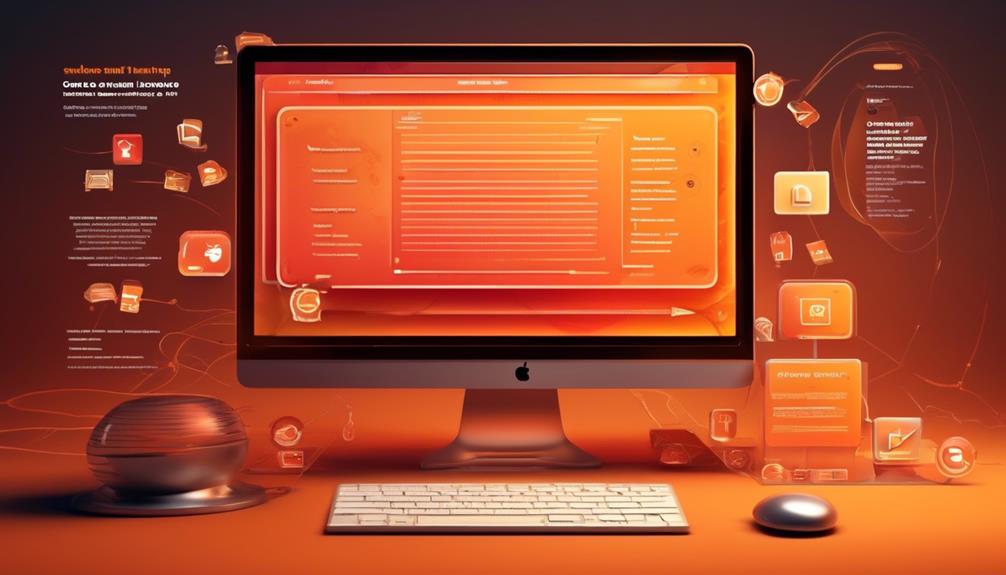
Email warm-up tools play a vital role in streamlining and automating the process of gradually increasing the number of emails sent to build a positive reputation with email providers. These tools are essential for ensuring that the time gap between two cold outreach campaigns is utilized effectively to get the email account ready for a higher volume of emails.
By using automated email warm-up tools, such as SalesBlink, Mailwarm, and Warmup Inbox, businesses can simplify the warm-up process and ensure that domain keys identified mail (DKIM) and other authentication methods are properly set up. These tools help in starting with a smaller volume of emails and then gradually increasing the sending limit, which is crucial for establishing a positive reputation and avoiding spam filters.
With the aid of these email warm-up tools, businesses can significantly improve deliverability, increase open rates, and enhance their overall sender reputation, leading to improved email campaign performance.
Determining When to Stop Warm-Up
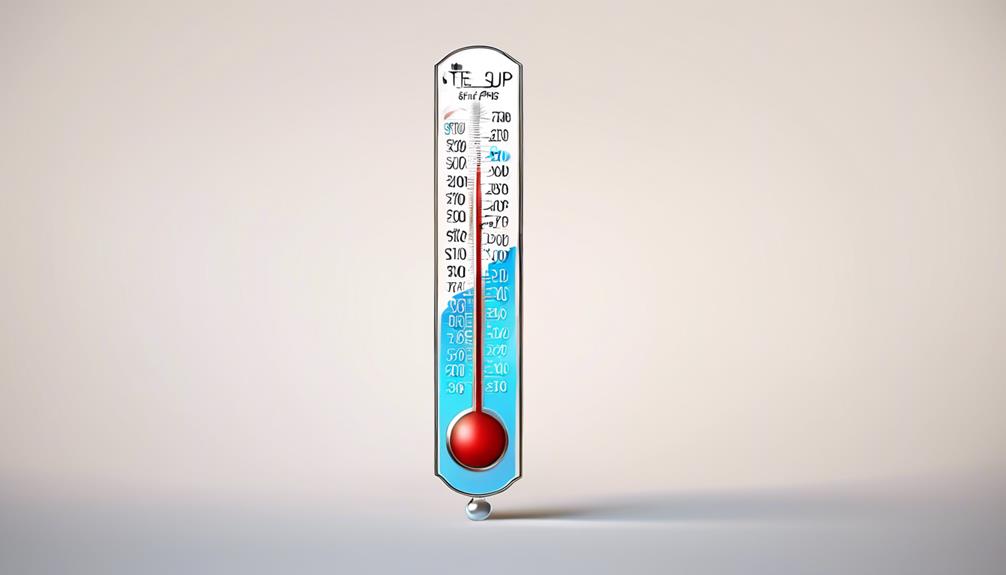
We gauge the completion of the warm-up process by tracking open rates, click-through rates, and bounce rates, ensuring they reflect a positive sender reputation and low bounce rates.
- Consistent Positive Metrics: When open rates and click-through rates stabilize at a level indicative of engagement and interaction, it's a strong indicator that the warm-up process has been successful. This shows that the email addresses are responsive and that the sender's reputation is positive.
- Low Bounce Rates: A key factor in determining the end of warm-up is when bounce rates remain consistently low. This indicates that the email address list has been properly warmed up and that the sender's reputation is strong.
- Stable Sender Reputation: If the sender's reputation remains positive over a sustained period, it's a sign that the warm-up phase has been effective. When there are no red flags or warning notifications regarding the sender's reputation, it's an indication that it's time to start sending cold emails.
Determining when to stop the warm-up process is crucial to ensure the success of the cold email campaign. By following best practices and monitoring key metrics, it's possible to build a positive sender reputation and increase the volume of cold emails sent while maintaining deliverability and engagement.
Benefits of Email Warm-Up

After determining when to stop the warm-up process, it is important to understand the significant benefits of email warm-up for establishing credibility and improving deliverability. Warming up an email list is essential for building a good sender reputation, which ultimately improves the reputation and increases the chances of reaching the inbox. By gradually increasing the volume of emails sent, the sender's reputation is positively impacted, leading to a higher delivery rate and open rate. Additionally, warming up an email list helps in avoiding spam filters, ensuring that emails are not flagged or marked as spam, and ultimately improving the overall deliverability.
| Benefits of Email Warm-Up | Description |
|---|---|
| Build a Positive Sender | Gradually increasing the email volume helps to establish a positive sender reputation. |
| Improve Reputation | Email warm-up contributes to improving the sender's reputation, leading to higher deliverability. |
| Reach the Inbox | Proper warm-up increases the likelihood of emails reaching the inbox, enhancing the open rate. |
After Email Warm-Up Strategies

Implementing effective post-warm-up strategies is crucial for maintaining the positive reputation and deliverability established during the email warm-up process.
After completing the warm-up phase, it's essential to continue nurturing the email account before sending cold emails.
Here are three essential strategies to ensure a smooth transition from warm-up to regular email sending:
- Gradually increase daily sending limits: Once the warm-up emails have been successfully sent, it's time to start gradually increasing the number of emails sent per day. This gradual increase helps maintain the positive reputation built during the warm-up process.
- Test campaign before sending cold: Before transitioning to regular cold email outreach, it's important to test the waters with a small-scale campaign. This allows for further assessment of the email account's readiness to send cold emails and ensures that all warm-up processes have been completed effectively.
- Monitor engagement and adjust: After the warm-up phase, closely monitor open rates, click-through rates, and bounce rates. Based on these metrics, make necessary adjustments to the email sending strategy to optimize engagement and deliverability.
Cold Email Outreach Challenges

Navigating the challenges of cold email outreach presents a crucial aspect following the warm-up strategies for maintaining a positive reputation and deliverability. When sending cold emails, it's essential to be aware of potential obstacles that may arise. One of the primary challenges is the gap between two consecutive emails sent during the warm-up process. This can affect the ability to reach the audience effectively. Additionally, setting up an email account and replying back promptly while avoiding spam reports is crucial. We must also consider the impact of IP address reputation with email service providers, as a poor reputation can hinder the success of cold email outreach. To illustrate the challenges further, consider the following table:
| Challenges | Impact | Solution |
|---|---|---|
| Gap between consecutive emails | Reduced outreach effectiveness | Gradually increase email volume |
| IP address reputation | Higher likelihood of emails being marked as spam | Prioritize maintaining a positive reputation |
| Replying back promptly | Ensuring engagement and response from recipients | Utilize email automation tools |
| Avoiding spam reports | Protecting email deliverability and reputation | Use targeted and personalized email content |
Understanding and addressing these challenges is essential for successful cold email outreach.
Frequently Asked Questions
How Long Does It Take to Warm up an Email List?
It takes 8 to 12 weeks to warm up an email list properly.
We gradually increase the number of emails sent each day during this period.
This process helps establish credibility and increases the chances of emails reaching the inbox.
Monitoring open rates, click-through rates, and bounce rates is crucial to determine when the warm-up process is complete.
Effective warm-up improves email deliverability, builds sender reputation, and helps scale outreach faster.
What Is an Email Warm up Strategy?
An effective email warm-up strategy involves gradually increasing email volume to establish sender reputation and avoid being marked as spam. We use methods like custom domains, email authentication, and engaging in conversations to simulate natural user activities. This process improves deliverability and increases inbox placement.
Additionally, tools such as SalesBlink, Mailwarm, and Warmup Inbox automate and streamline the warm-up process, saving time and effort.
How Do I Warm up My Email Server?
We warm up our email server gradually to avoid spam filters and improve deliverability.
An interesting statistic is that 80% of emails sent from new or inactive accounts end up in the spam folder.
We start with a low volume of emails, gradually increasing over 4-6 weeks. This process establishes credibility and increases the chances of our emails reaching the inbox.
We use tools like SalesBlink and Warmup Inbox for automated warm-up.
Do Email Warmup Services Work?
Yes, email warm-up services work.
They help establish credibility and improve deliverability by gradually increasing the volume of emails sent.
Without warming up, there's a risk of emails being marked as spam or deleted, impacting deliverability.
We've found that email warm-up services, such as SalesBlink, Mailwarm, and Warmup Inbox, can effectively automate and streamline the warm-up process, ensuring better results for our email outreach efforts.
What Are Effective Strategies for Warming Up an Email List?
When it comes to warming up your emails, one effective strategy is to start with a re-engagement campaign to reconnect with inactive subscribers. Another strategy is to personalize your emails based on subscriber behavior and interests, increasing the likelihood of engagement. Additionally, offering valuable content or incentives can warm up your email list effectively.
Conclusion
In conclusion, email warm-up is crucial for establishing trust and credibility with your audience.
By following the manual methods and best practices outlined in this article, you can ensure your emails reach the inbox and avoid being marked as spam.
Remember, email warm-up isn't just a phase, but a vital strategy to skyrocket your email deliverability and engagement.
So, don't underestimate its power – it's the secret sauce to email success!

